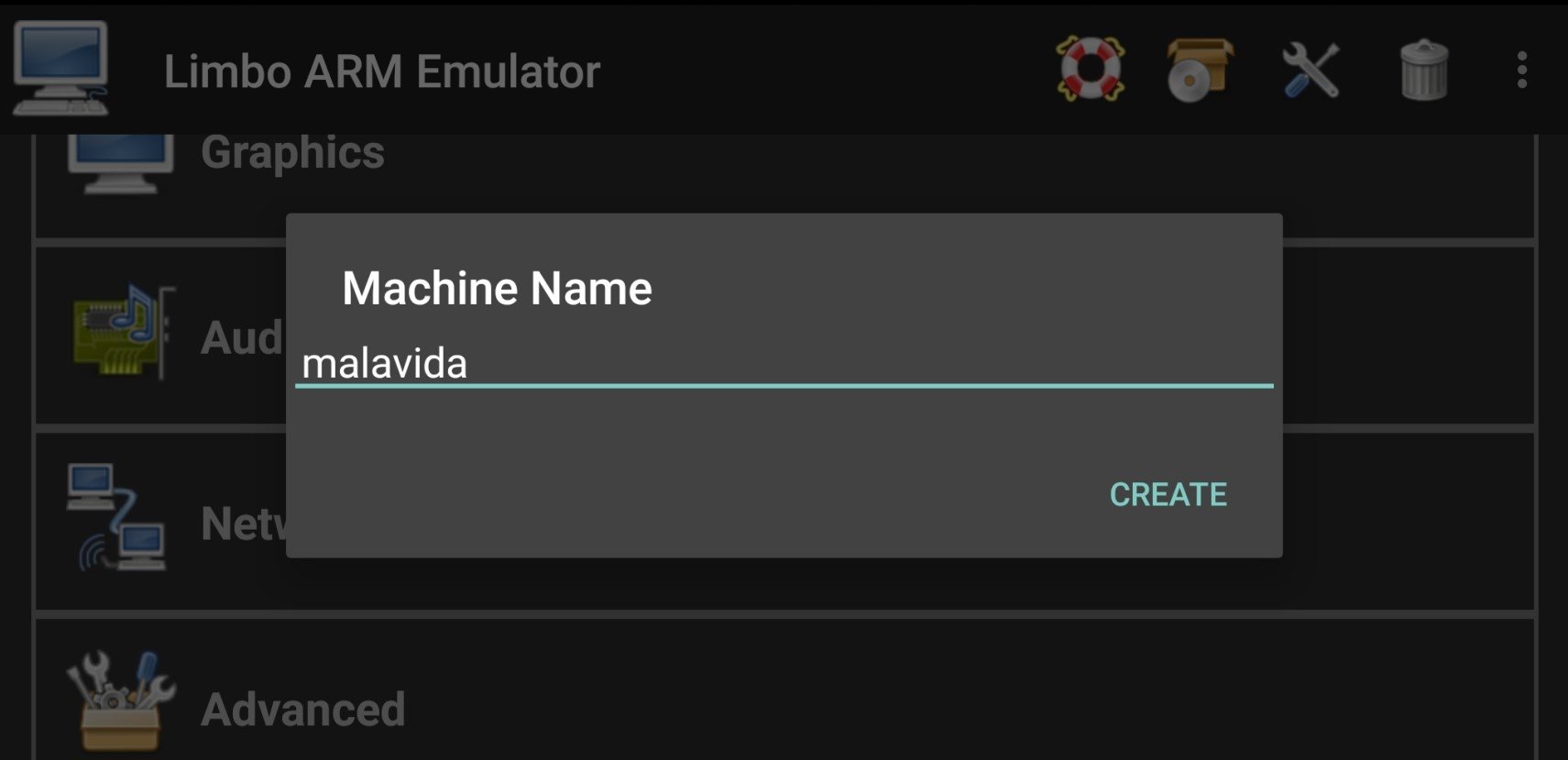

Limbo provides Qemu (w/ all its functionality) for Android. Probably too slow for many people's liking. Also got Rollercoaster Tycoon working in Wine (just- 'cause I could). Even got sound working (by compiling Pulseaudio and piping signals to a Pulseaudio simple protocol player that is available for useless Android- but pretty choppy). And, I even installed Office 97 with file format converters (not that I need it, because I also compiled Abiword and Gnumeric from source).

I compiled Wine 1.39 (using Slackware 11.0's 2.6 kernel). I've even used its Apache daemon to host my website a couple times. And (obviously), CUPS and network mounts and Samba and ssh and wget. I am able to run an X Window System (TWM), Emacs, games, and most of the bells and whistles a person would expect. So, I gotta run Slackware 11.0 w/ minimal packages from that (and, that's pretty tight- but doable). This leaves me with only 4GB on the main system disk. And, Limbo does not request write access on external disks. *My* device does not allow integrating an add on Micro SD with the system disk. So (using a RAID), best case scenario is installing a system on an 8GB filesystem. Also, a user is limited to (at most) four disks by Qemu.
Limbo emulator install#
So, this leaves a user needing to install a system on disk images that are (at most) 2GB (just one of the many, many completely unnecessary limitations of worthless Android).
Limbo emulator android#
Android only allows permissions on a FAT32 filesystem. Damn Small Linux runs pretty well, too (but- I couldn't stand using it because it doesn't allow a user to improve the system!) And, Limbo makes what would (basically) be a useless hunk of plastic into a halfway decent system that allows a user to actually make use of the device. Limbo x86 runs Slackware 11.0 really well on top of an Android system for ARM. So- buy one of those and stop trying to be a hacker. You would like to run a brand new Windows system on a brand new x86 desktop that you payed hundreds or thousands of dollars for. If this is not obvious to you, you are using the WRONG SOLUTION. And (obviously), the most common use of this emulator is going to be running an *older* x86 system (an *operating system*- not a crappy Windows system, which is just a useless toy) on an Android device that is running on top of an ARM based system. We can also configure different aspects such as graphics, audio or other external storage systems.Limbo x86 is a port of Qemu x86 for a cruddy Android API (which is basically worthless on its own). We'll be able to control its functions from the latter but it also supports the connection of peripherals by means of different connectivity systems, including mice and keyboards. The only thing we have to do is load the operating system's image onto our device.
Limbo emulator software#
It's open-source software that offers us the possibility to manage a virtual machine from a very simple interface. This emulator is capable of recreating on our smartphone or tablet's screen different lightweight operating system developed for the Intel x86 architecture such as DSL Linux, FreeDOS, Debian, and others. Emulation of operating systems designed for PC The latest example is this Limbo Emulator, a QEMU or Quick Emulator port, an open-source virtual machine capable of supporting the virtualization of different operating systems. Android is an extremely versatile platform that has proven to be capable of doing almost anything through emulation software.


 0 kommentar(er)
0 kommentar(er)
